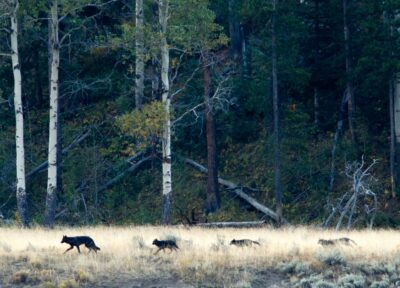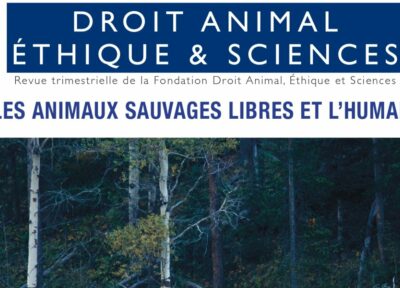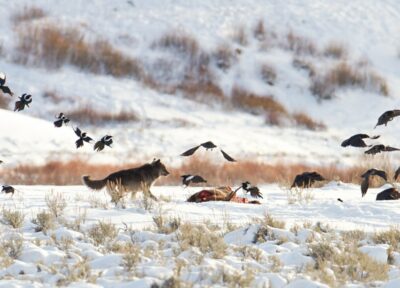Sophie Hild
PhD, ethologist, director of La Fondation Droit Animal, Éthique et Sciences (LFDA)
This publication follows the conference “Animal welfare, from Science to Law” which took place on 10 and 11 December 2015 at the “Maison de l’Unesco” in Paris, and under the patronage of the French commission for Unesco.
It gathers texts written by the invited speakers and was updated in 2018, unless mentioned otherwise. The publication is divided in four parts, as was the case during these two conference days. Each deals with one aspect of the subject: definition, situation, factors of influence, and propositions for the future. They are introduced below.
First part
What is animal welfare?
We live in a society that sees itself as more and more ethical and progressive. As an area of philosophy, ethics guide human actions towards what is right and virtuous. It pushes us towards a fairer and more respectful treatment of other human beings. It translates, among other things, into social progress and legislations in favour of human rights. Likewise, respecting nature and its living beings must constitute a principle guiding our choices and actions. Chapter 1 of this publication will remind us of the philosophical considerations on animals and of the progress made by human minds on the subject of animal welfare.
Animal welfare has become a familiar concept to us all, thanks in particular to the high visibility given recently to farm animals. Animal protectors have used the term for a long time, and researchers have worked on the subject for decades. Their research has had basic objectives, like the studies helping us understand animals’ emotional and cognitive abilities, as well as applied objectives, like the work aiming at mitigating stress in farm animals, often to improve performance (productivity, reproduction…). Nevertheless, advances in animal welfare science are not universally known, and for some it remains a blurry concept. Chapters 2 and 3 will explain some essential scientific notions related to animal welfare in order for us to understand, among other things, how we can evaluate what animals feel and what welfare level they experience.
Even among the specialists, some terms are debated. Chapter 4 will explain the difference between the uses of two words in French: « bien-être » (welfare) versus « bientraitance » (good treatment) and the consequences of using one word or the other. Chapter 5 will analyse the absence of a legal definition of animal welfare in the French law: which animals are concerned by legal protections? Without being exhaustive on the subject, this first part will give the readers essential keys to understand the essential notions and definitions of animal welfare, and allow them to think critically on the subject. Knowledge and hindsight will allow us to use the terms “animal welfare” in full understanding of its meaning. We already observe “welfarewashing”1 in some domains: some practices are said to improve animal welfare without any demonstration of actual and significant effects. We must be vigilant so that animal welfare does not become an empty shell used only to reassure the public and the consumers.
Second part
Animal welfare as taken into account by law around the world: globalisation and disparities
Knowledge is not enough to make society respect living beings. It can help us take decisions to improve the life of animals. Nevertheless, economical constraints, a resistance to change or even unawareness of scientific facts can slow down an effective account taken of scientific recommendations. This is where the law has a role to play, with its legislations and regulations. Although it is often late to take into account the progress of science and ethics, the law can forcibly make people, or on the contrary prevent them to, perform some practices or behaviours.
Science is the same wherever we are on Earth, but its transcription into legal texts around the world varies greatly. Europe is known as the most advanced as regards legal texts protecting animal welfare. Chapter 6 will show us what those European texts on animal welfare are, while Chapter 7 will compare norms in several European countries. Chapters 8 to 11 will explore the state of laws conducive to animals in several countries in the world: the United States of America, where animal welfare is still struggling to penetrate the law, although activists there are the most powerful; Brazil, which has become a major animal exporter; South Africa, where traditions rule animal breeding; and India, where the gods wear animal faces, where respecting animals is a rule of life, but where misery is in conflict with these honourable principles.
Third part
Animal welfare in the face of socio-economic and cultural factors
Many factors explain such discrepancies. Chapter 12 will start by giving an overview of the costs and benefits of actions taken in favour of animal welfare. On legal grounds, adopting norms favourable to animals can depend on pressures from international trading. Chapter 13 will explain how animal welfare friendly norms can be seen as obstacles in free trade agreements between countries.
Being able to get rid of preconceived ideas is also important to evaluate animal welfare. Access to pasture is not enough in itself to guarantee that animals are in good welfare. Chapter 14 will explain why there is not a simple correlation between the size of a farm and animal welfare. Chapter 15 will turn to the farmers to understand what is at stake for them regarding animal welfare. Practices evolve, sometimes with the help of new technologies that allow a more efficient management of threats to animal welfare.
To end this part, we will see how “hard law”, binding, normative, is not always the most responsive means to improve animals’ living conditions. Chapter 16 will tell us of a Swiss NGO initiative in collaboration with a big supplier to improve animal welfare using “soft law”, helped by consumers.
Fourth part
Objectives for the future: finding alternatives, overcoming the shortcomings
Despite everyone’s good will and intentions in favour of taking fully into account the welfare of animals, there still exist legal practices inflicting great suffering on animals: male castration, force feeding of geese and ducks, dehorning of bovines or caprines… Chapter 17 will give an overview of the current threats to animal welfare.
In parallel, in order to mitigate the negative effects of some husbandry practices, enriching the living environment of animals is a growing subject. Are these measures effective or are they mere plasters to cover the wounds? Chapter 18 will deal with animal needs and what kinds of enrichments are used to improve animal welfare, especially in captive wild animals.
The part will end on the initiative of the French Ministry of Agriculture to develop a strategy for animal welfare in the period 2016-2020, built in collaboration with all stakeholders, including NGOs. Chapter 19 will show the 5 axes and the 20 measures that were adopted.
What about the other animals?
Animal welfare is a human duty relevant to animals that are held captive by humans, under their responsibility. Of course, wild animals living freely in nature independently from humans – at least in principle2, can be in states of good welfare, may they be short lived or for a longer period. But it is not a duty for humans to ensure their welfare. How could it be? If we want to make hares safe, we should prevent foxes from eating them. What about the welfare of foxes then?
This publication deals almost exclusively with those called “production animals”. Still, we ought to ensure welfare for captive animals in other categories (those used for company, for science, for zoos, for shows…). Far from ignoring those categories – each deserving their own volume – the organisers of this publication have chosen to focus on those representing the larger number of animals held under the responsibility of humans. In France, more than a billion of terrestrial animals are “produced” each year – including 800 million chicken. The numbers pertaining to aquaculture are harder to read given the production of fish is given in tonnage: about 35,000 tons of fish are produced in France each year, including 96% of rainbow trout.
Be that as it may, and to conclude this introduction by going back to notions of ethics, recent years have seen a growing collective awareness with regards to animal welfare. The main objective of this publication is to contribute to elevate the debate on the subject, to make it healthy, constructive and open, by giving the reader aessential pluridisciplinary knowledge (law, sciences, philosophy, economy…).
We hope you enjoy your reading.
- In reference to “greenwashing”.
- “In principle” because human activities have a devastating impact on animals’ natural environments and on climate.




